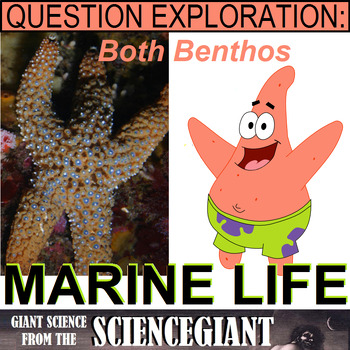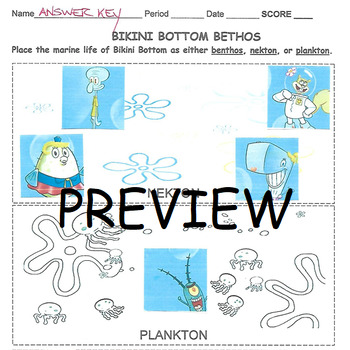Question Explore: Bikini Bottom and Open Ocean Life (Plankton, Nekton, Benthos)
- Word Document File
Also included in
- Teachers use the Strategic Instruction Model (SIM) Concept Enhancement Routines to transform abstract main ideas and key topics into a concrete representation that helps students think about and talk about the key topic and essential related information. SIM is about promoting effective teaching andPrice $11.90Original Price $17.00Save $5.10
Description
How is Marine Life Classified by Location? With help from the crew of the Krusty Krab, this Question Exploration explains how marine life in the open oceans (and Bikini Bottom) is either plankton, nekton, or benthos, like the characters from Nickelodeon's "Spongebob Squarepants."
Question Exploration Routines are instructional methods that teachers can use to help a diverse student population understand a body of content information by carefully answering a critical question to arrive at a main idea answer. Students taught using the content enhancement routines earned higher total test scores than did students taught using the lecture-discussion method.
Personally, I use the Content Enhancement Routines to figure out what I want to say and how I want to say it. It keeps my "Sage on the Stage" time limited to what fits onto 2-3 pages (about 45 minutes of directed class discussion).
This product includes both the completed strategic instruction, and the student guide blanked except for vocabulary, scaffolding questions, and graphics already filled in. It includes warm ups, worksheets, and recommended videos for review, and it's in Microsoft Word .doc form so that Ts can customize the discussion to fit the needs of their Ss.
This Content Enhancement Routine is classroom tested to help students with the following Florida Next Generation Sunshine State Standards in Science:
Students Will Be Able To (SWBAT/I Can):
- SC.912.L.15.7 Discuss distinguishing characteristics of vertebrate and representative invertebrate phyla, and chordate classes using typical examples.
- SC.912.L.17.2 Explain the general distribution of life in aquatic systems as a function of chemistry, geography, light, depth, salinity, and temperature.
- SC.912.L.17.3 Discuss how various oceanic and freshwater processes, such as currents, tides, and waves, affect the abundance of aquatic organisms.
- SC.912.L.17.9 Use a food web to identify and distinguish producers, consumers, and decomposers. Explain the pathway of energy transfer through trophic levels and the reduction of available energy at successive trophic level.
__________
Help other Ts Stand on The Shoulders of Giants -- leave a review for this resource! And when you leave a review, you see further. You'll earn 1 credit for every $1 spent on TpT for that resource. Each credit has a value of 5 cents, so 20 credits earned equals $1 you can apply to future TpT purchases.
#StayGiant and stay up on my new resources and STEM news. Look for the green ★ star near the top of any page within my store and click "FOLLOW". Stand on The Shoulders of Giants, and together we'll see further, inspire students, and enlighten inquisitive minds!






